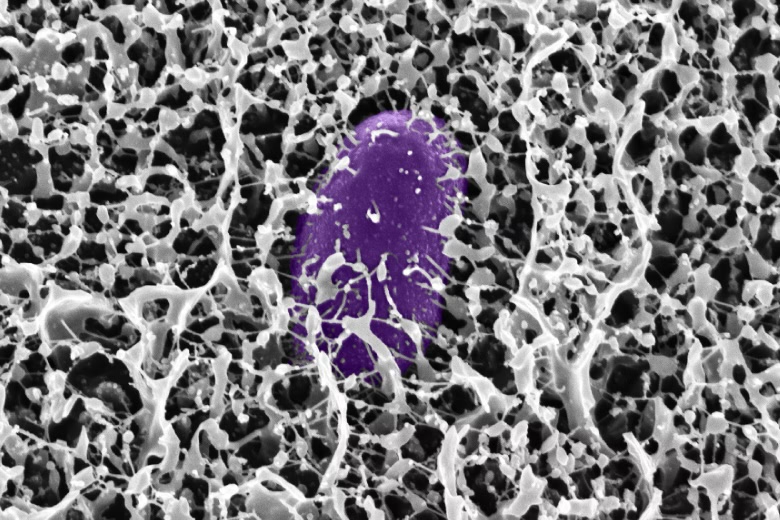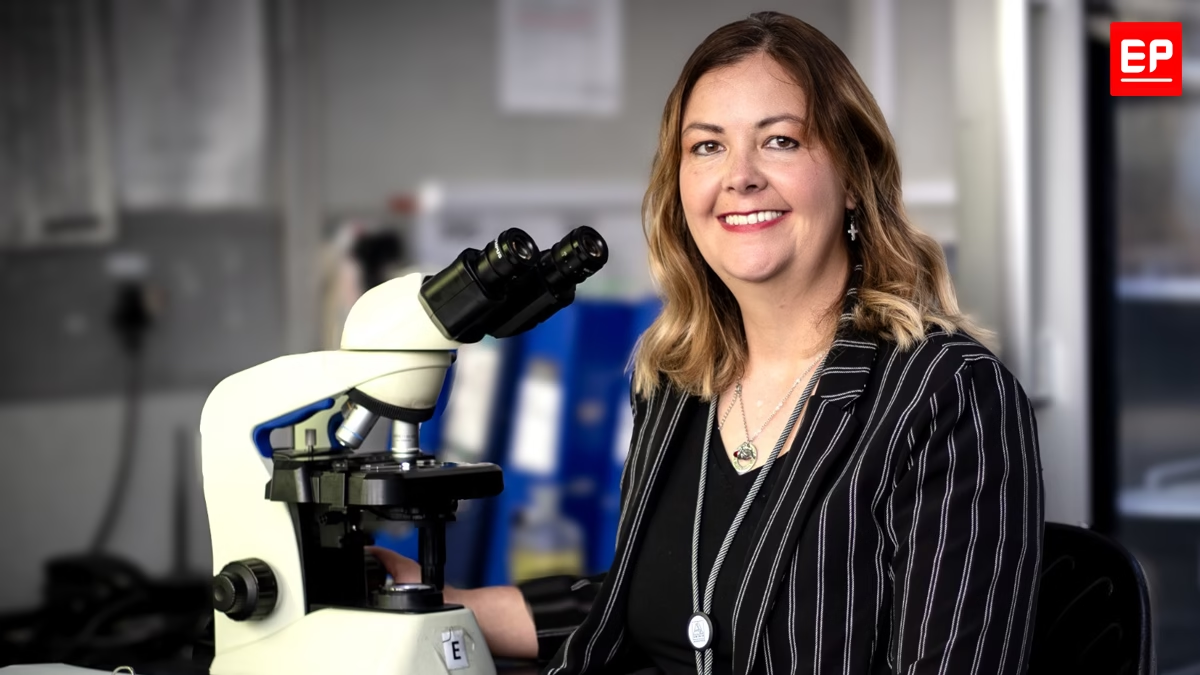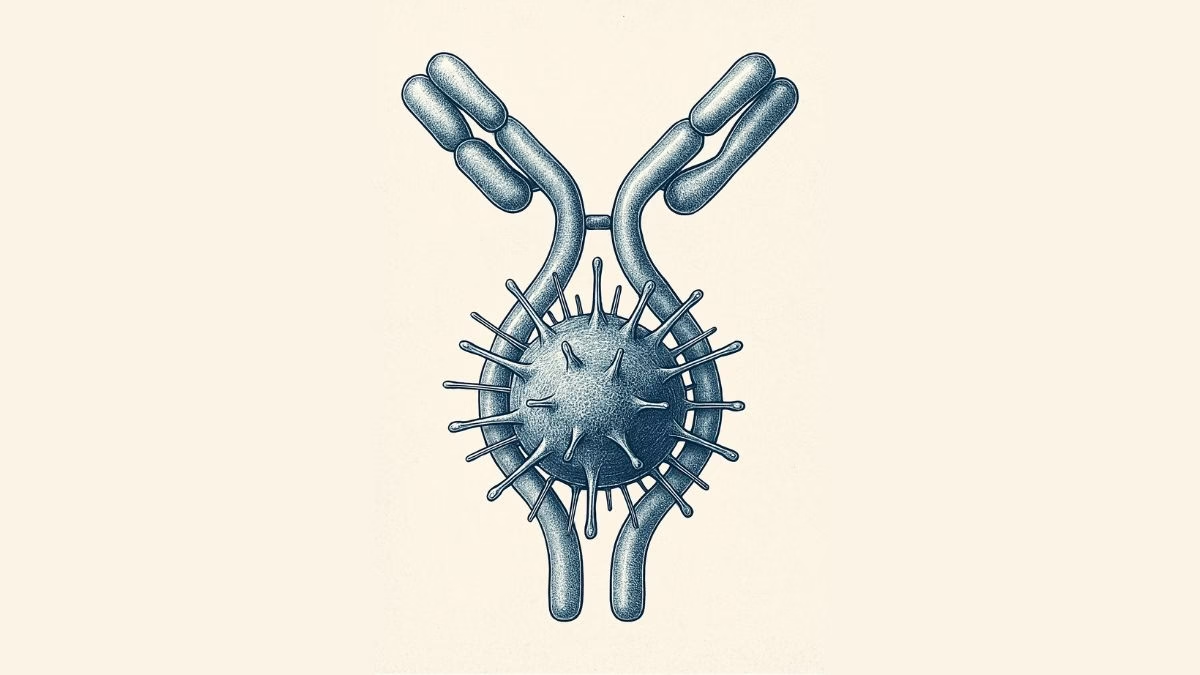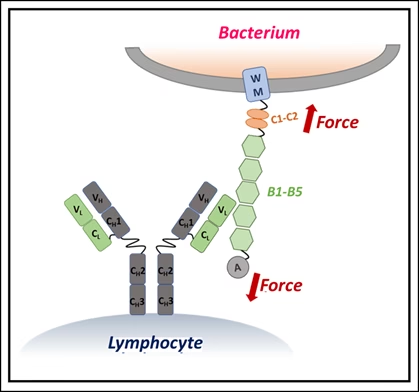Health
Study Reveals Essential Genes That Help Tuberculosis Survive Airborne Transmission
Tuberculosis is a respiratory disease caused by Mycobacterium tuberculosis, a bacterium that predominantly affects the lungs and spreads through droplets released by an infected person

Tuberculosis thrives in the lungs, but when the bacteria causing the disease are expelled into the air, they face a much harsher environment with drastic changes in pH and chemistry. Understanding how these bacteria survive this airborne journey is essential for their persistence, yet little is known about the mechanisms that protect them as they move from one host to another.
Now, MIT researchers and their collaborators have identified a family of genes that are crucial for the bacterium’s survival specifically when exposed to the air, likely offering protection during its transmission.
Previously, many of these genes were thought to be nonessential, as they didn’t appear to affect the bacteria’s role in causing disease when introduced into a host. This new study, however, suggests that these genes are vital for transmission rather than proliferation.
“There is a blind spot in our understanding of airborne transmission, especially regarding how a pathogen survives sudden environmental changes as it circulates in the air,” says Lydia Bourouiba, head of the Fluid Dynamics of Disease Transmission Laboratory, associate professor of civil and environmental engineering, mechanical engineering, and core faculty member at MIT’s Institute for Medical Engineering and Science. “Now, through these genes, we have an insight into the tools tuberculosis uses to protect itself.”
The team’s findings, published this week in Proceedings of the National Academy of Sciences, could lead to new tuberculosis therapies that target both infection and transmission prevention.
“If a drug targeted the products of these genes, it could effectively treat an individual and, even before that person is cured, prevent the infection from spreading,” says Carl Nathan, chair of the Department of Microbiology and Immunology and the R.A. Rees Pritchett Professor of Microbiology at Weill Cornell Medicine.
Nathan and Bourouiba co-senior authored the study, which includes MIT collaborators and Bourouiba’s mentees from the Fluids and Health Network: co-lead author postdoc Xiaoyi Hu, postdoc Eric Shen, and students Robin Jahn and Luc Geurts. The research also involved collaborators from Weill Cornell Medicine, the University of California at San Diego, Rockefeller University, Hackensack Meridian Health, and the University of Washington.
Pathogen’s Perspective
Tuberculosis is a respiratory disease caused by Mycobacterium tuberculosis, a bacterium that predominantly affects the lungs and spreads through droplets released by an infected person, typically when they cough or sneeze. Tuberculosis remains the leading cause of death from infection, except during global viral pandemics.
“In the last century, we’ve seen the 1918 influenza pandemic, the 1981 HIV/AIDS epidemic, and the 2019 SARS-CoV-2 pandemic,” notes Nathan. “Each virus has caused significant loss of life, but after they subsided, we were left with the ‘permanent pandemic’ of tuberculosis.”
Much of the research on tuberculosis focuses on its pathophysiology—how the bacteria infect a host—along with diagnostic and treatment methods. For their new study, Nathan and Bourouiba turned their attention to tuberculosis transmission, specifically exploring how the bacteria defend themselves during airborne transmission.
“This is one of the first efforts to study tuberculosis from an airborne perspective, investigating how the organism survives harsh changes in the environment during transmission,” says Bourouiba.
Critical Defense
At MIT, Bourouiba studies fluid dynamics and how droplet behaviors can spread particles and pathogens. She partnered with Nathan, who investigates tuberculosis and the genes that the bacteria rely on throughout their life cycle.
To explore how tuberculosis survives in the air, the team aimed to replicate the conditions the bacterium encounters during transmission. They first worked to develop a fluid with similar viscosity and droplet sizes to those expelled by a person coughing or sneezing. Bourouiba points out that previous research on tuberculosis relied on liquid solutions that are used to grow the bacteria. However, these liquids differ significantly from the fluids tuberculosis patients expel.
Furthermore, the fluid typically sampled from tuberculosis patients, like sputum for diagnostic tests, is thick and sticky, which makes it inefficient at spreading and forming inhalable droplets. “It’s too gooey to break into inhalable droplets,” Bourouiba explains.
Through her research on fluid and droplet physics, the team determined a more accurate viscosity and droplet size distribution for tuberculosis-laden microdroplets in the air. They also analyzed the composition of droplets by studying infected lung tissue samples. They then created a fluid that mimicked the viscosity, surface tension, and droplet size that would be released into the air when a person exhales.
Next, the team deposited different fluid mixtures onto plates as tiny droplets, measuring how they evaporated and what structures they left behind. They discovered that the new fluid shielded the bacteria at the center of the droplet, unlike traditional fluids where bacteria were more exposed to the air. The realistic fluid also retained more water.
The team then infused the droplets with bacteria carrying genes with various knockdowns to see how the absence of specific genes affected bacterial survival during evaporation.
They evaluated over 4,000 tuberculosis genes and identified a family of genes that became crucial in airborne conditions. Many of these genes are involved in repairing damage to oxidized proteins, such as those exposed to air, while others are responsible for breaking down irreparably damaged proteins.
“What we found is a lengthy list of candidate genes, some more prominently involved than others, that could play a critical role in helping tuberculosis survive during transmission,” Nathan says.
While the experiments cannot fully replicate the bacteria’s biophysical transmission (as droplets fly through the air and evaporate), the team mimicked these conditions by placing plates in a dry chamber to accelerate droplet evaporation, similar to what happens in flight.
Going forward, the researchers are developing platforms to study droplets in flight under various conditions. They plan to further investigate the role of the newly identified genes in more realistic experiments, potentially weakening tuberculosis’s airborne defenses.
“The idea of waiting to diagnose and treat someone with tuberculosis is an inefficient way to stop the pandemic,” Nathan says. “Most individuals who exhale tuberculosis haven’t been diagnosed yet, so we need to interrupt its transmission. Understanding the process is key, and now we have some ideas.”
Health
Study Unveils Mucus Molecules That Block Salmonella and Prevent Diarrhea
A new MIT-led study reveals how key mucus molecules naturally shield the gut from dangerous bacteria like Salmonella

A new MIT-led study reveals how key mucus molecules naturally shield the gut from dangerous bacteria like Salmonella. The breakthrough opens new pathways for affordable, preventative treatments for travelers and soldiers at risk of infection.
Researchers at MIT have discovered new powerful ways the body guards itself from dangerous bacteria: by deploying mucins, special molecules in mucus that neutralize microbes and stop infection before it starts. The team identified mucins—especially MUC2 and MUC5AC—in the digestive tract that shut down the genetic machinery Salmonella uses to invade cells and cause diarrhea.
“By using and reformatting this motif from the natural innate immune system, we hope to develop strategies to preventing diarrhea before it even starts. This approach could provide a low-cost solution to a major global health challenge that costs billions annually in lost productivity, health care expenses, and human suffering,” said Katharina Ribbeck, the Andrew and Erna Viterbi Professor of Biological Engineering at MIT, in a media statement.
In experiments, exposing Salmonella to the intestinal mucin MUC2 blocked the bacterial proteins that enable infection, turning off the critical regulator HilD. The study also found that a similar mucin from the stomach, MUC5AC, works the same way—and both molecules appear to protect against multiple foodborne germs triggered by similar genetic switches.
“We discovered that these mucins not only create a physical shield but also actively control whether pathogens can turn on genes needed for infection,” Ribbeck explained in the media statement.
Lead authors Kelsey Wheeler and Michaela Gold say synthetic versions of these mucins could soon be added to oral rehydration salts or chewable tablets, providing practical protection for troops, travelers, and people in high-risk areas. According to Wheeler, “Mucin mimics would particularly shine as preventatives, because that’s how the body evolved mucus — as part of this innate immune system to prevent infection,” she said.
Health
First Case of Rare and Deadly Fungus Identified in Sub-Saharan Africa
It is also the first time the rare and deadly fungal infection has been identified in an HIV-positive patient in the region

Doctors at the University of the Free State (UFS) and the National Health Laboratory Service (NHLS) at the Universitas Academic Hospital have confirmed the first recorded case of S. oblongispora mucormycosis in sub-Saharan Africa. It is also the first time the rare and deadly fungal infection has been identified in an HIV-positive patient in the region.
The case involved a 32-year-old man living with HIV who was admitted to Universitas Academic Hospital with severe swelling on the right side of his face. Despite being on antiretroviral therapy and treatment for hypertension, his condition worsened rapidly. Four days after admission, a CT scan and tissue biopsies were conducted. He died three days later, before a diagnosis could be confirmed.
Landmark discovery
Dr. Bonita van der Westhuizen, Senior Lecturer and Pathologist in the UFS Department of Medical Microbiology, described the discovery as a critical turning point for public health in the region.
“This discovery is significant because it highlights the presence of this fungal pathogen in a region where it may have been previously unrecognised or underreported. It now raises awareness about the diversity of fungal infections affecting immunocompromised populations and underscores the need for improved diagnostics, surveillance, and treatment strategies in the region,” she said in a media statement sent to EdPublica.
The case report, co-authored with Drs. Liska Budding and Christie Esterhuysen from the UFS/NHLS and Prof. Samantha Potgieter from the UFS Department of Internal Medicine, was published in Case Reports in Pathology last month.
Rapid and aggressive disease
Mucormycosis, caused by fungi from the order Mucorales, is known for its speed and severity. The infection can invade blood vessels, spread to vital organs, and resist the body’s immune defences.
“Mucorales fungi are known for their fast growth and ability to invade blood vessels. This allows the infection to spread quickly through the body, potentially reaching vital organs,” Dr. Van der Westhuizen explained in the statement. She added that external factors such as traumatic injuries or hospital-acquired infections can worsen the disease’s progression.
While mucormycosis usually strikes patients with underlying conditions like diabetes, cancer, or organ transplants, S. oblongispora has often been linked to infections in otherwise healthy individuals after traumatic inoculation. The lack of local data, however, means its prevalence in African populations remains unclear.
Diagnostic hurdles
In this case, invasive fungal infection was not initially suspected, and the patient did not receive antifungal medication or surgical treatment. The diagnosis was confirmed only after his death, highlighting the broader challenges of detecting fungal diseases in resource-limited settings.
“This is unfortunately the case with mould infections as most readily available diagnostic methods lack sensitivity and these pathogens take long to grow in the laboratory,” Dr. Van der Westhuizen said. “Fungal diagnostics is a specialised field that requires expertise. However, if clinicians are aware of these infections and they have an increased index of suspicion, appropriate therapy can be initiated even before the results are available.”
Experts warn that even with antifungal drugs and surgical removal of infected tissue, the window for treatment is narrow and survival rates remain low.
Building awareness and research
Dr. Van der Westhuizen is continuing her research on invasive mould infections as part of her PhD, focusing on fungal epidemiology and its impact on vulnerable groups such as HIV patients.
Her goal, she said in the media statement, is “to advance understanding and awareness of invasive mould infections, specifically S. oblongispora, in sub-Saharan Africa and among HIV patients. I aim to improve early diagnosis, treatment strategies, and clinical outcomes, as well as to highlight the importance of monitoring fungal infections in immunocompromised populations.”
She hopes the findings will spur more regional collaboration and investment in fungal diagnostics — an often overlooked but increasingly urgent frontier in infectious disease research.
Health
Giant Human Antibody Found to Act Like a Brace Against Bacterial Toxins
This synergistic bracing action gives IgM a unique advantage in neutralizing bacterial toxins that are exposed to mechanical forces inside the body

Our immune system’s largest antibody, IgM, has revealed a hidden superpower — it doesn’t just latch onto harmful microbes, it can also act like a brace, mechanically stabilizing bacterial toxins and stopping them from wreaking havoc inside our bodies.
A team of scientists from the S.N. Bose National Centre for Basic Sciences (SNBNCBS) in Kolkata, India, an autonomous institute under the Department of Science and Technology (DST), made this discovery in a recent study. The team reports that IgM can mechanically stiffen bacterial proteins, preventing them from unfolding or losing shape under physical stress.
“This changes the way we think about antibodies,” the researchers said in a media statement. “Traditionally, antibodies are seen as chemical keys that unlock and disable pathogens. But we show they can also serve as mechanical engineers, altering the physical properties of proteins to protect human cells.”
Unlocking a new antibody role
Our immune system produces many different antibodies, each with a distinct function. IgM, the largest and one of the very first antibodies generated when our body detects an infection, has long been recognized for its front-line defense role. But until now, little was known about its ability to physically stabilize dangerous bacterial proteins.
The SNBNCBS study focused on Protein L, a molecule produced by Finegoldia magna. This bacterium is generally harmless but can become pathogenic in certain situations. Protein L acts as a “superantigen,” binding to parts of antibodies in unusual ways and interfering with immune responses.

Using single-molecule force spectroscopy — a high-precision method that applies minuscule forces to individual molecules — the researchers discovered that when IgM binds Protein L, the bacterial protein becomes more resistant to mechanical stress. In effect, IgM braces the molecule, preventing it from unfolding under physiological forces, such as those exerted by blood flow or immune cell pressure.
Why size matters
The stabilizing effect depended on IgM concentration: more IgM meant stronger resistance. Simulations showed that this is because IgM’s large structure carries multiple binding sites, allowing it to clamp onto Protein L at several locations simultaneously. Smaller antibodies lack this kind of stabilizing network.
“This synergistic bracing action gives IgM a unique advantage in neutralizing bacterial toxins that are exposed to mechanical forces inside the body,” the researchers explained.
The finding highlights an overlooked dimension of how our immune system works — antibodies don’t merely bind chemically but can also act as mechanical modulators, physically disarming toxins.
Such insights could open a new frontier in drug development, where future therapies may involve engineering antibodies to stiffen harmful proteins, effectively locking them in a harmless state.
The study suggests that by harnessing this natural bracing mechanism, scientists may be able to design innovative treatments that go beyond traditional antibody functions.
-

 Space & Physics5 months ago
Space & Physics5 months agoIs Time Travel Possible? Exploring the Science Behind the Concept
-

 Earth6 months ago
Earth6 months ago122 Forests, 3.2 Million Trees: How One Man Built the World’s Largest Miyawaki Forest
-

 Space & Physics6 months ago
Space & Physics6 months agoDid JWST detect “signs of life” in an alien planet?
-

 Know The Scientist5 months ago
Know The Scientist5 months agoNarlikar – the rare Indian scientist who penned short stories
-

 Society4 months ago
Society4 months agoShukla is now India’s first astronaut in decades to visit outer space
-

 Society4 months ago
Society4 months agoAxiom-4 will see an Indian astronaut depart for outer space after 41 years
-

 Earth4 months ago
Earth4 months agoWorld Environment Day 2025: “Beating plastic pollution”
-

 Society6 months ago
Society6 months agoRabies, Bites, and Policy Gaps: One Woman’s Humane Fight for Kerala’s Stray Dogs












